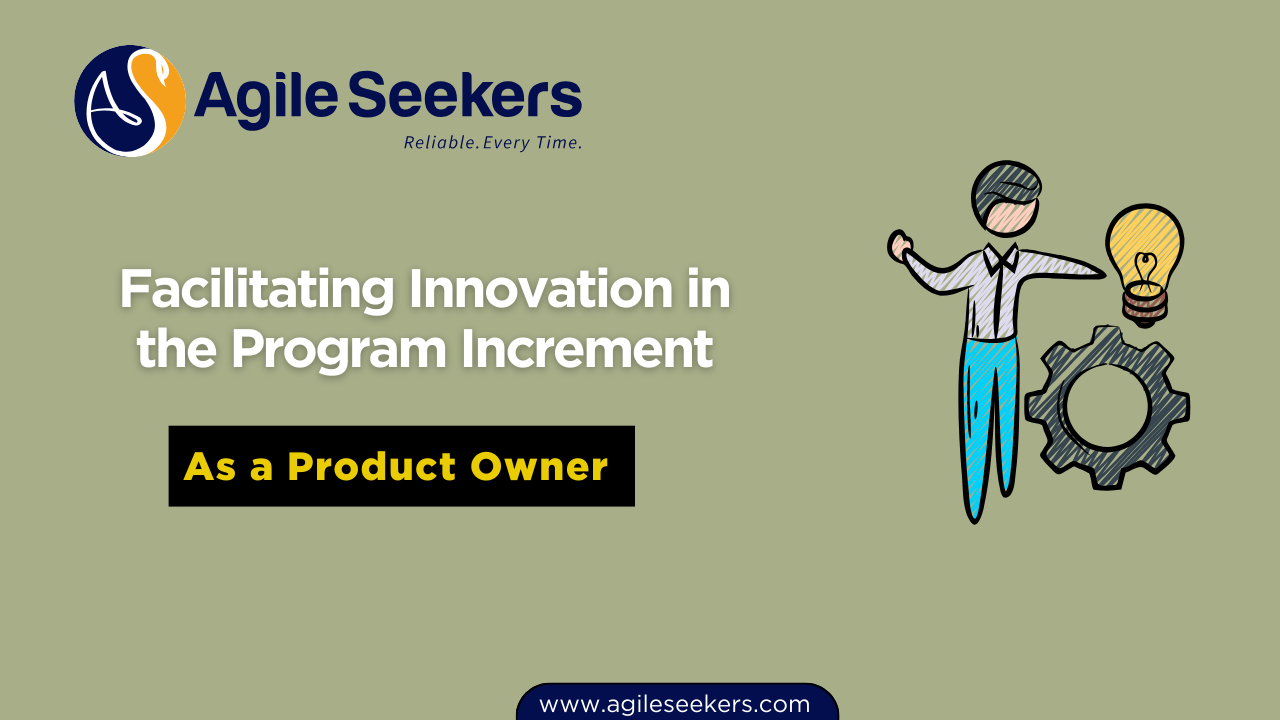How a Product Owner Facilitates Innovation in the Program Increment

In the Scaled Agile Framework (SAFe), continuous innovation is not a buzzword—it’s a core principle. One of the most strategic opportunities for driving innovation within SAFe is through the Innovation and Planning (IP) iteration. And who plays a critical role in this? The Product Owner (PO). Specifically, SAFe-certified Product Owners and Product Managers (POPMs) are key catalysts in making innovation a reality rather than just a goal on a slide deck.
Let’s explore how the Product Owner facilitates innovation during the Program Increment (PI), with a specific focus on the IP iteration. We’ll also unpack how this ties into broader business agility and why becoming a certified SAFe POPM professional is more than a resume booster—it's a business enabler.
What is the Innovation and Planning (IP) Iteration?
The Innovation and Planning (IP) iteration is a built-in timebox in SAFe, typically occurring at the end of every Program Increment. It provides Agile Release Trains (ARTs) with a critical pause to catch their breath, plan for the future, and—importantly—innovate. Unlike other sprints or iterations focused on delivery, the IP iteration is designed for strategic thinking, creative exploration, and organizational improvement.
During this period, teams can:
- Explore new ideas or technologies
- Refactor or address technical debt
- Conduct hackathons or innovation spikes
- Train and cross-skill team members
- Engage in Inspect and Adapt (I&A) activities
- Participate in PI planning for the next increment
The IP iteration is not a luxury; it’s a necessity in maintaining a culture of continuous improvement and delivering sustainable value.
The Strategic Role of Product Owners in IP Iteration
While the development teams may be hands-on with prototypes and experiments, the Product Owner acts as the facilitator and strategic lens through which innovation is shaped. Here’s how:
1. Aligning Innovation with Customer Needs
POPMs ensure that innovation doesn’t veer off into "cool but useless" territory. They stay close to customer feedback, market trends, and business objectives. This allows them to guide teams toward solving real problems with fresh solutions. When innovation is rooted in value delivery, it gets traction faster and earns organizational buy-in.
2. Prioritizing Innovation in the Backlog
Innovation doesn’t happen in a vacuum—it needs visibility. A SAFe Product Owner Certification equips professionals with the skills to balance features, enablers, and technical stories in the backlog. During the IP iteration, POPMs elevate innovation items that may not have made it into the main delivery cycles but hold long-term strategic value.
3. Facilitating Hackathons and Innovation Spikes
Product Owners often serve as enablers for innovation events. They frame problem statements, sponsor team-led spikes, and ensure there's alignment with product vision. These sessions can lead to breakthrough ideas or valuable architectural explorations that otherwise wouldn’t surface in the rush of feature delivery.
4. Leveraging Metrics and Feedback Loops
Great innovation is informed by data. Product Owners use usage analytics, customer interviews, Net Promoter Scores (NPS), and other metrics to inform areas ripe for innovation. This data-centric approach transforms innovation from a guessing game into a repeatable capability.
5. Participating in Inspect and Adapt Workshops
The Inspect and Adapt (I&A) workshop is a cornerstone of the IP iteration. Here, teams reflect on what worked, what didn’t, and what can be improved. POPMs play a central role in identifying improvement backlog items, facilitating root cause analysis, and ensuring that action items lead to meaningful change in the next PI.
Creating Space for Innovation: The Cultural Shift
Innovation doesn’t just need time—it needs permission. POPMs can be the cultural stewards who champion this mindset within their teams and stakeholders. By clearly communicating the value of the IP iteration and showcasing the outcomes (e.g., a prototype, a new automation tool, or a newly learned skill), they reinforce the importance of creative freedom.
SAFe POPM Training: Building Innovation Competency
To be effective innovation facilitators, Product Owners need more than just instincts. They need structured training in Lean thinking, customer-centric design, prioritization techniques, and SAFe practices. That’s exactly what the SAFe POPM Training delivers.
This certification prepares professionals to:
- Understand the end-to-end flow of value in a SAFe enterprise
- Define and manage epics, features, and stories
- Support PI planning and drive continuous improvement
- Bridge the gap between strategy and execution
And when innovation becomes a team sport, this training helps POPMs lead the charge with confidence.
Real-World Examples of PO-Led Innovation in IP Iteration
Let’s look at how certified POPMs have driven change during IP iterations:
| Industry | Innovation | POPM Impact |
|---|---|---|
| Retail | Introduced AR in mobile shopping | Facilitated innovation spike, secured cross-functional buy-in |
| Banking | Launched customer dashboard prototype | Led customer research and prioritized MVP features |
| Healthcare | Developed internal scheduling tool | Identified pain point via feedback loops, empowered dev team |
Final Thoughts
The IP iteration is more than a pause—it’s a launchpad. With the right mindset and training, Product Owners can turn these iterations into powerful drivers of innovation and improvement. They align creative thinking with strategic goals and empower their teams to explore new frontiers.
If you're aiming to elevate your impact as a PO or PM, consider the SAFe Product Owner/Manager certification. It’s more than just a credential—it’s a roadmap for becoming a strategic leader in product development.
Learn more about SAFe POPM Certification and take the next step in your agile journey.
Further Reading:




















